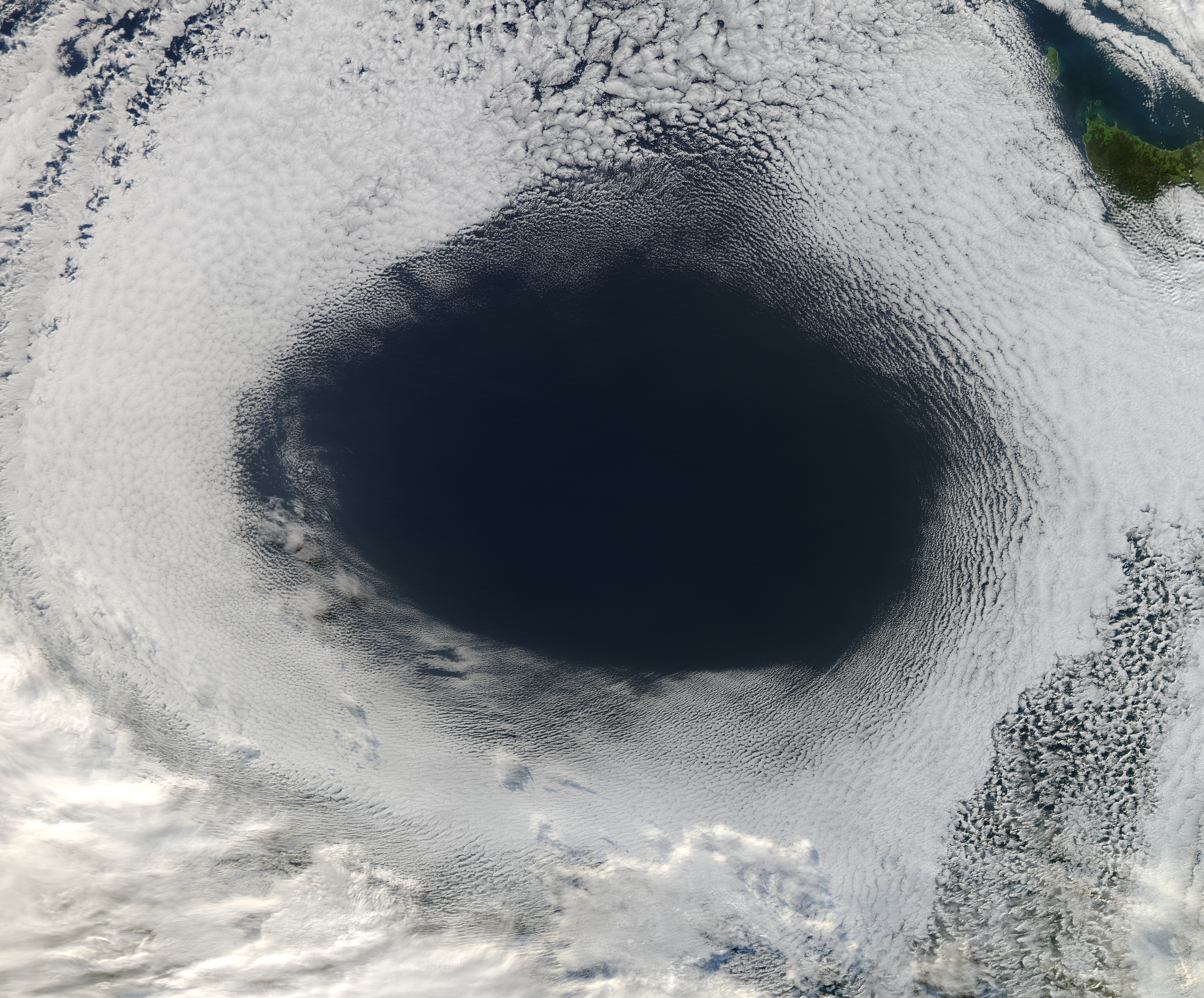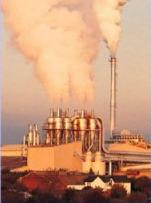|
Index Of Meteorology Articles
This is a list of meteorology topics. The terms relate to meteorology, the interdisciplinary scientific study of the atmosphere that focuses on weather processes and forecasting. (see also: List of meteorological phenomena) A * advection * aeroacoustics * aerobiology * aerology * air parcel (in meteorology) * air quality index (AQI) * airshed (in meteorology) * American Geophysical Union (AGU) * American Meteorological Society (AMS) * anabatic wind * anemometer * annular hurricane * anticyclone (in meteorology) * apparent wind * Atlantic Oceanographic and Meteorological Laboratory (AOML) * Atlantic hurricane season * atmometer * atmosphere * Atmospheric Model Intercomparison Project (AMIP) * Atmospheric Radiation Measurement (ARM) * (atmospheric boundary layer BL planetary boundary layer (PBL) * atmospheric chemistry * atmospheric circulation * atmospheric convection * atmospheric dispersion modeling * atmospheric electricity * atmospheric icing * atmospher ... [...More Info...] [...Related Items...] OR: [Wikipedia] [Google] [Baidu] |
Meteorology
Meteorology is the scientific study of the Earth's atmosphere and short-term atmospheric phenomena (i.e. weather), with a focus on weather forecasting. It has applications in the military, aviation, energy production, transport, agriculture, construction, weather warnings and disaster management. Along with climatology, atmospheric physics and atmospheric chemistry, meteorology forms the broader field of the atmospheric sciences. The interactions between Earth's atmosphere and its oceans (notably El Niño and La Niña) are studied in the interdisciplinary field of hydrometeorology. Other interdisciplinary areas include biometeorology, space weather and planetary meteorology. Marine weather forecasting relates meteorology to maritime and coastal safety, based on atmospheric interactions with large bodies of water. Meteorologists study meteorological phenomena driven by solar radiation, Earth's rotation, ocean currents and other factors. These include everyday ... [...More Info...] [...Related Items...] OR: [Wikipedia] [Google] [Baidu] |
Anticyclone
A high-pressure area, high, or anticyclone, is an area near the surface of a planet where the atmospheric pressure is greater than the pressure in the surrounding regions. Highs are middle-scale meteorological features that result from interplays between the relatively larger-scale dynamics of an entire planet's atmospheric circulation. The strongest high-pressure areas result from masses of cold air which spread out from polar regions into cool neighboring regions. These highs weaken once they extend out over warmer bodies of water. Weaker—but more frequently occurring—are high-pressure areas caused by atmospheric subsidence: Air becomes cool enough to precipitate out its water vapor, and large masses of cooler, drier air descend from above. Within high-pressure areas, winds flow from where the pressure is highest, at the center of the area, towards the periphery where the pressure is lower. However, the direction is not straight from the center outwards, but curved du ... [...More Info...] [...Related Items...] OR: [Wikipedia] [Google] [Baidu] |
Atmospheric Electricity
Atmospheric electricity describes the electrical charges in the Earth's atmosphere (or that of another planet). The movement of charge between the Earth's surface, the atmosphere, and the ionosphere is known as the global atmospheric electrical circuit. Atmospheric electricity is an interdisciplinary topic with a long history, involving concepts from electrostatics, atmospheric physics, meteorology and Earth science. Thunderstorms act as a giant battery in the atmosphere, charging up the electrosphere to about 400,000 volts with respect to the surface. This sets up an electric field throughout the atmosphere, which decreases with increase in altitude. Atmospheric ions created by cosmic rays and natural radioactivity move in the electric field, so a very small current flows through the atmosphere, even away from thunderstorms. Near the surface of the Earth, the magnitude of the field is on average around 100 V/m, oriented such that it drives positive charges down. Atmospheric ... [...More Info...] [...Related Items...] OR: [Wikipedia] [Google] [Baidu] |
Atmospheric Dispersion Modeling
Atmospheric dispersion modeling is the mathematical simulation of how air pollutants disperse in the ambient atmosphere. It is performed with computer programs that include algorithms to solve the mathematical equations that govern the pollutant dispersion. The dispersion models are used to estimate the downwind ambient concentration of air pollutants or toxins emitted from sources such as industrial plants, vehicular traffic or accidental chemical releases. They can also be used to predict future concentrations under specific scenarios (i.e. changes in emission sources). Therefore, they are the dominant type of model used in air quality policy making. They are most useful for pollutants that are dispersed over large distances and that may react in the atmosphere. For pollutants that have a very high spatio-temporal variability (i.e. have very steep distance to source decay such as black carbon) and for epidemiological studies statistical land-use regression models are also u ... [...More Info...] [...Related Items...] OR: [Wikipedia] [Google] [Baidu] |
Atmospheric Convection
Atmospheric convection is the vertical transport of heat and moisture in the atmosphere. It occurs when warmer, less dense air rises, while cooler, denser air sinks. This process is driven by parcel-environment instability, meaning that a "parcel" of air is warmer and less dense than the surrounding environment at the same altitude. This difference in temperature and density (and sometimes humidity) causes the parcel to rise, a process known as buoyancy. This rising air, along with the compensating sinking air, leads to mixing, which in turn expands the height of the planetary boundary layer (PBL), the lowest part of the atmosphere directly influenced by the Earth's surface. This expansion contributes to increased winds, cumulus cloud development, and decreased surface dew points (the temperature below which condensation occurs). Convection plays a crucial role in weather patterns, influencing cloud formation, wind, and the development of thunderstorms, which can be associa ... [...More Info...] [...Related Items...] OR: [Wikipedia] [Google] [Baidu] |
Atmospheric Circulation
Atmospheric circulation is the large-scale movement of Atmosphere of Earth, air and together with ocean circulation is the means by which thermal energy is redistributed on the surface of the Earth. The Earth's atmospheric circulation varies from year to year, but the large-scale structure of its circulation remains fairly constant. The smaller-scale weather systems – middle latitudes, mid-latitude low-pressure area, depressions, or tropical convective cells – occur chaotically, and long-range weather predictions of those cannot be made beyond ten days in practice, or a month in theory (see chaos theory and the butterfly effect). The Earth's weather is a consequence of its illumination by the Sun and the laws of thermodynamics. The atmospheric circulation can be viewed as a heat engine driven by the Sun's energy and whose heat sink, energy sink, ultimately, is the blackness of space. The work produced by that engine causes the motion of the masses of air, and in that process ... [...More Info...] [...Related Items...] OR: [Wikipedia] [Google] [Baidu] |
Atmospheric Chemistry
Atmospheric chemistry is a branch of atmospheric science that studies the chemistry of the Earth's atmosphere and that of other planets. This multidisciplinary approach of research draws on environmental chemistry, physics, meteorology, computer modeling, oceanography, geology and volcanology, climatology and other disciplines to understand both natural and human-induced changes in atmospheric composition. Key areas of research include the behavior of trace gasses, the formation of pollutants, and the role of aerosols and greenhouse gasses. Through a combination of observations, laboratory experiments, and computer modeling, atmospheric chemists investigate the causes and consequences of atmospheric changes. Atmospheric composition The composition and chemistry of the Earth's atmosphere is important for several reasons, but primarily because of the interactions between the atmosphere and living organisms. Natural processes such as volcano emissions, lightning and bombardme ... [...More Info...] [...Related Items...] OR: [Wikipedia] [Google] [Baidu] |
Planetary Boundary Layer
In meteorology, the planetary boundary layer (PBL), also known as the atmospheric boundary layer (ABL) or peplosphere, is the lowest part of the atmosphere and its behaviour is directly influenced by its contact with a planetary surface. On Earth it usually responds to changes in surface radiative forcing in an hour or less. In this layer physical quantities such as flow velocity, temperature, and moisture display rapid fluctuations (turbulence) and vertical mixing is strong. Above the PBL is the "free atmosphere", where the wind is approximately geostrophic wind, geostrophic (parallel to the isobars), while within the PBL the wind is affected by surface Drag (physics), drag and turns across the Contour line#Barometric pressure, isobars (see Ekman layer for more detail). Cause of surface wind gradient Typically, due to aerodynamic drag (force), drag, there is a wind gradient in the wind flow ~100 meters above the Earth's surface—the surface layer of the planetary boundary ... [...More Info...] [...Related Items...] OR: [Wikipedia] [Google] [Baidu] |
Atmospheric Radiation Measurement
The Atmospheric Radiation Measurement User Facility (ARM User Facility) is a multi-laboratory United States Department of Energy scientific user facility used for national and international global climate research efforts. The ARM User Facility consists of three heavily instrumented fixed-location atmospheric observatories and mobile and aerial research facilities that measure radiative properties of the atmosphere, particularly cloud and aerosol formation processes. Continuous data from these sites, as well as supplemental data obtained through intensive field research campaigns, are available to scientists online through the ARM Data Archive. ARM is collaboratively managed by nine DOE national laboratories. Mission ARM seeks to provide the climate research community with strategically located in situ and remote-sensing observatories designed to improve the understanding and representation, in climate and earth system models, of clouds and aerosols as well as their interactions ... [...More Info...] [...Related Items...] OR: [Wikipedia] [Google] [Baidu] |
Atmospheric Model Intercomparison Project
Atmospheric Model Intercomparison Project (AMIP) is a standard experimental protocol for global atmospheric general circulation models (AGCMs). It provides a community-based infrastructure in support of climate model diagnosis, validation, intercomparison, documentation and data access. Virtually the entire international climate modeling community has participated in this project since its inception in 1990. AMIP is endorsed by the Working Group on Numerical Experimentation (WGNE) of the World Climate Research Programme, and is managed by the Program for Climate Model Diagnosis and Intercomparison with the guidance of the WGNE AMIP Panel. The AMIP experiment itself is simple by design; an AGCM is constrained by realistic sea surface temperature and sea ice from 1979 to near present, with a comprehensive set of fields saved for diagnostic research. This model configuration removes the added complexity of ocean-atmosphere feedbacks in the climate system. It is not meant to be used ... [...More Info...] [...Related Items...] OR: [Wikipedia] [Google] [Baidu] |
Atmosphere
An atmosphere () is a layer of gases that envelop an astronomical object, held in place by the gravity of the object. A planet retains an atmosphere when the gravity is great and the temperature of the atmosphere is low. A stellar atmosphere is the outer region of a star, which includes the layers above the opaque photosphere; stars of low temperature might have outer atmospheres containing compound molecules. The atmosphere of Earth is composed of nitrogen (78%), oxygen (21%), argon (0.9%), carbon dioxide (0.04%) and trace gases. Most organisms use oxygen for respiration; lightning and bacteria perform nitrogen fixation which produces ammonia that is used to make nucleotides and amino acids; plants, algae, and cyanobacteria use carbon dioxide for photosynthesis. The layered composition of the atmosphere minimises the harmful effects of sunlight, ultraviolet radiation, solar wind, and cosmic rays and thus protects the organisms from genetic damage. The curr ... [...More Info...] [...Related Items...] OR: [Wikipedia] [Google] [Baidu] |
Atmometer
An atmometer or evaporimeter is a scientific instrument used for measuring the rate of water evaporation from a wet surface to the atmosphere. Atmometers are mainly used by farmers and growers to measure evapotranspiration (ET) rates of crops at any field location. Evapotranspiration is a measure of all of the water that evaporates from land surfaces plus the water that transpires from plant surfaces. Based on the amount of water that does evaporate and transpire, the user can water crops correspondingly, which results in less water use and possibly increased crop yields. Companies that currently sell atmometers include C&M Meteorological Supply and Calsense. Design An atmometer consists of a porous, ceramic plate connected to a water reservoir by a glass or plastic tube. The device stands around tall with a diameter of . Water is drawn from the water reservoir through the tube to wet the plate. As the water on the plate evaporates, more water is drawn from the reservoir to re- ... [...More Info...] [...Related Items...] OR: [Wikipedia] [Google] [Baidu] |






